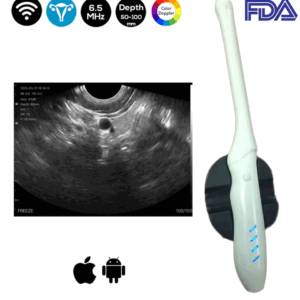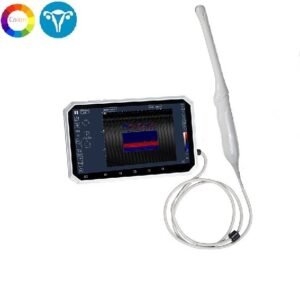Ovulation Detection Using Ultrasound
One of the most crucial steps in having a child is the release of an egg from its follicle in one of a woman’s two ovaries. When an egg is ovulated, it is taken up by one of the fallopian tubes and begins its journey toward the uterus.
Ovulation is induced by a spike of luteinizing hormone (LH) in the woman’s blood and occurs 36 hours after the LH surge begins. A pregnancy is created when the egg is fertilized and implants in the endometrium. If a pregnancy does not materialize, the endometrial lining that forms in preparation for pregnancy is lost as menstrual flow.
Because a number of issues can hinder or interrupt ovulation and result in infertility, determining whether or not a woman is ovulating is frequently required.
Which Ultrasound Is the most suitable for ovulation detection?
The Convex and Transvaginal Color Double Head Wireless Ultrasound Scanner SIFULTRAS-5.43 was created exclusively for OB/GYN applications.
Ultrasound, a technology that employs sound waves to create a picture on a monitor screen, can be used to detect follicular development. This is a painless technique that is often performed with a probe put into the vagina, but it may also be performed with an external probe placed on the belly. The follicle is thin-walled and filled with fluid before ovulation. As the egg inside the follicle develops, so does the follicle. Ovulation usually occurs when the follicle is between 1.8 and 2.5 millimeters in diameter.
Ultrasound can help you time your intercourse or insemination. In women on fertility medicines, ultrasound may be performed on multiple separate days during the menstrual cycle to accurately measure and monitor each follicle.
Reference: Ultrasound scanning of ovaries to detect ovulation in women
Disclaimer: Although the information we provide is used by different doctors and medical staff to perform their procedures and clinical applications, the information contained in this article is for consideration only. SIFSOF is not responsible neither for the misuse of the device nor for the wrong or random generalizability of the device in all clinical applications or procedures mentioned in our articles. Users must have the proper training and skills to perform the procedure with each ultrasound scanner device.
The products mentioned in this article are only for sale to medical staff (doctors, nurses, certified practitioners, etc.) or to private users assisted by or under the supervision of a medical professional.



